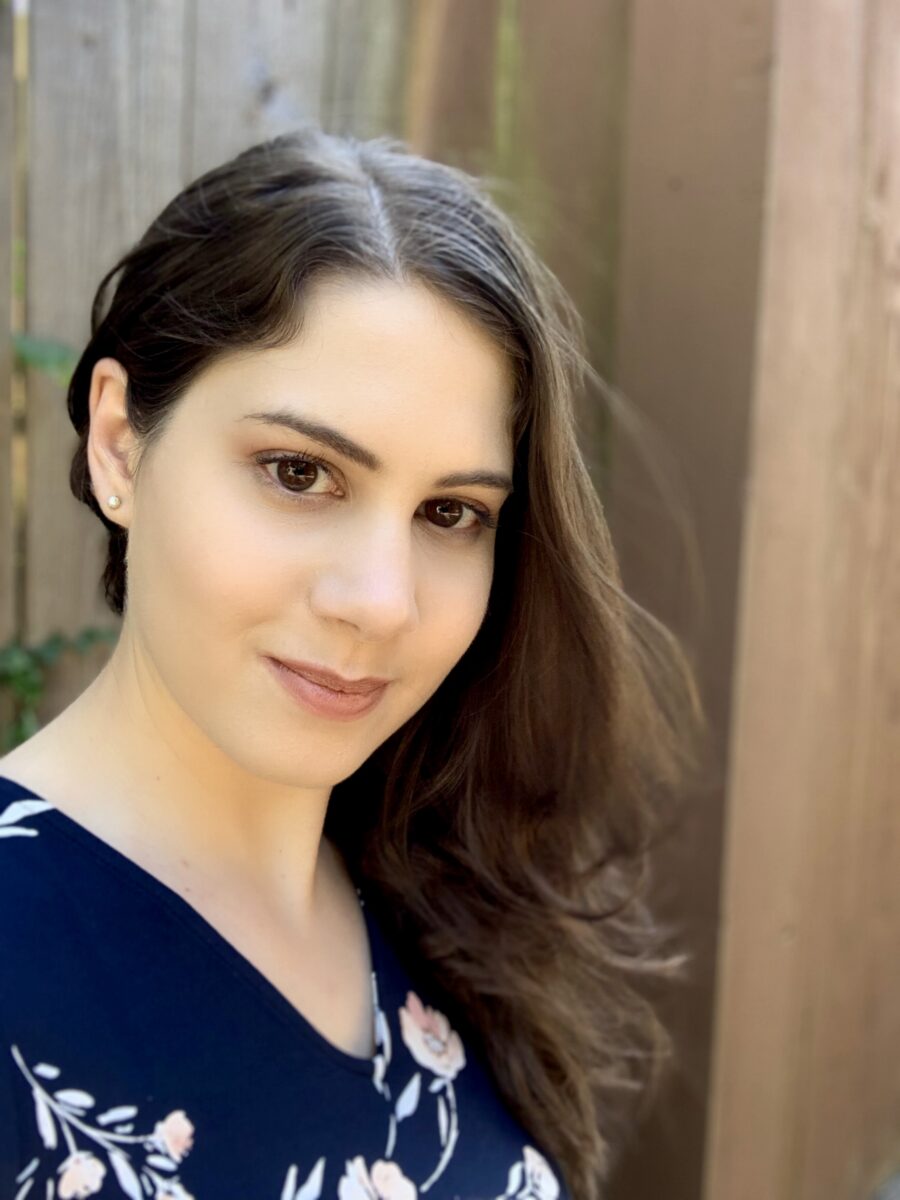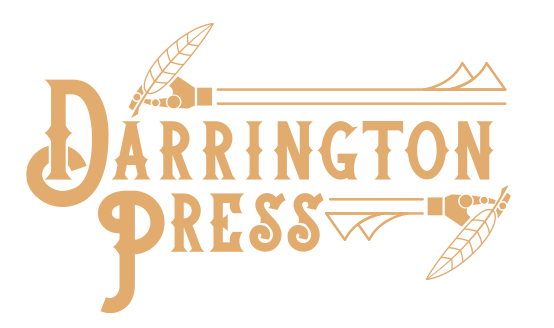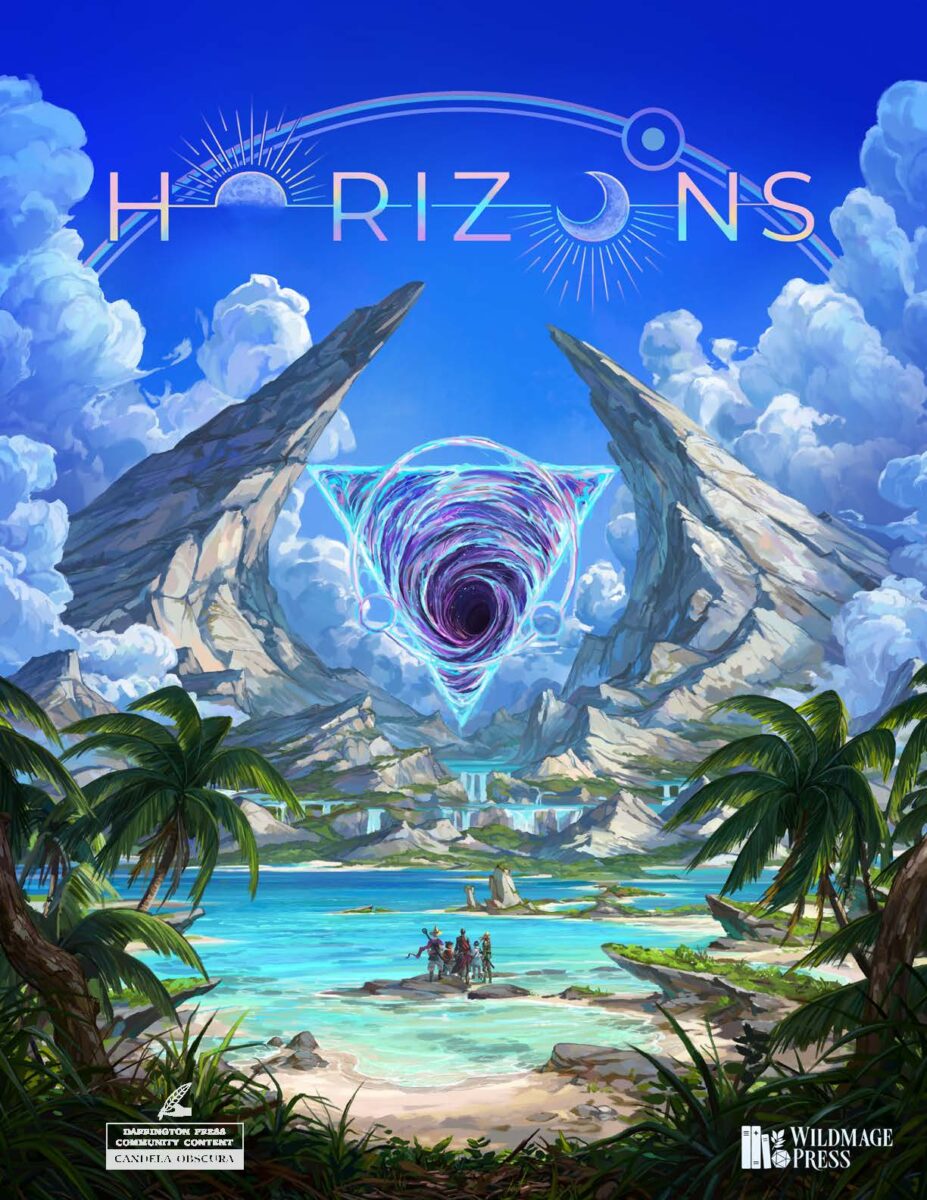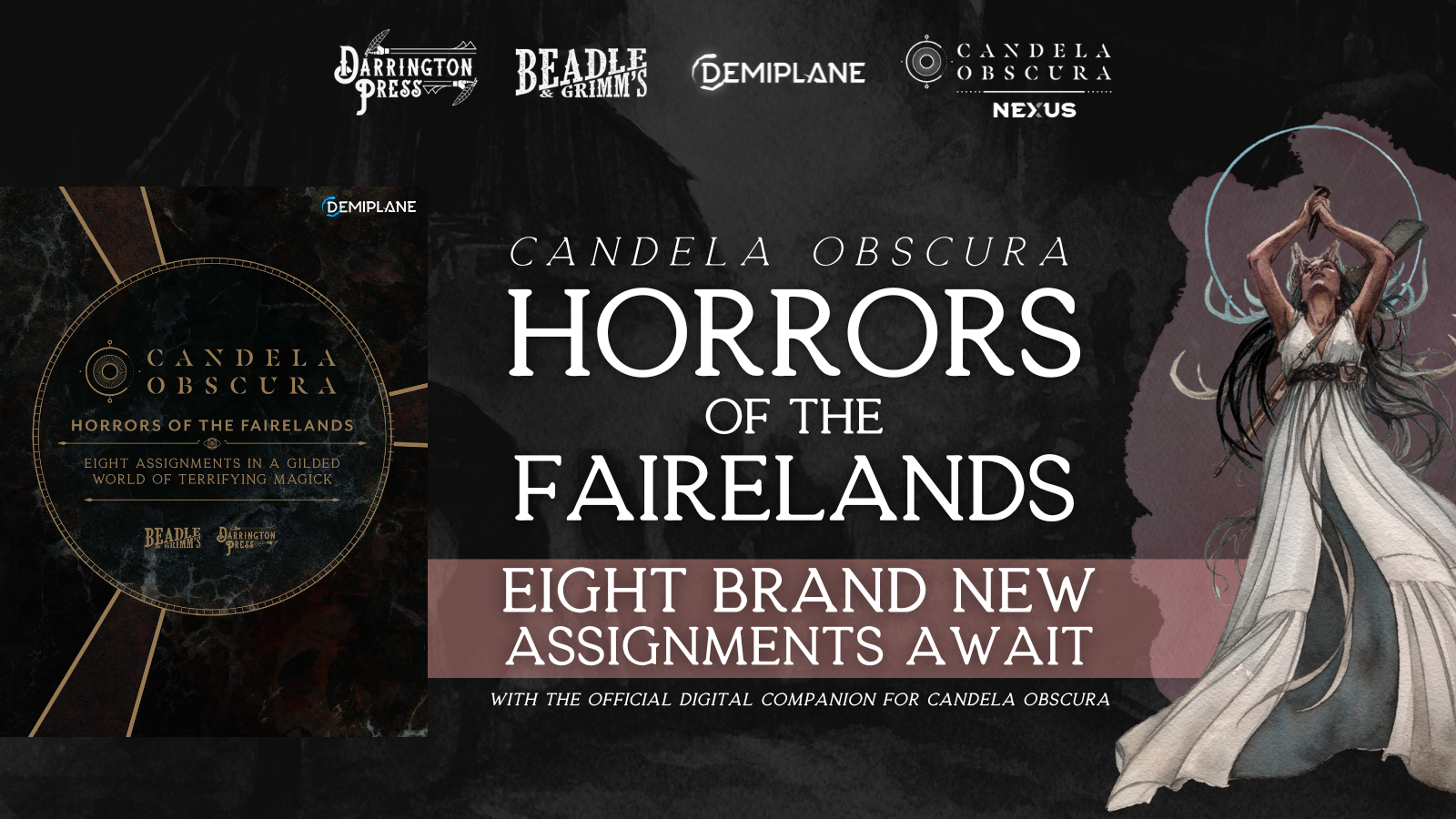- HOME
- PRODUCTS
- A Familiar Problem
- Candela Obscura
- Caper Cards: Bells Hells
- Daggerheart
- For the Queen
- Queen by Midnight
- Queen by Midnight: Quarter Past
- Solar Gardens
- Tal’Dorei Campaign Setting Reborn
- Till the Last Gasp
- Uk’otoa
- Vox Machina Art Books: The Chronicles of Exandria Vol I
- Vox Machina Art Books: The Chronicles of Exandria Vol II
- SHOP
- LOCATE GUILD STORE
- LATEST INFO
- NEWSLETTER
- CONTACT US
Interview: Three New Candela Obscura Specialties with Carlos Cisco & Hannah Rose
- Blog
-
Feb 05
- Share post
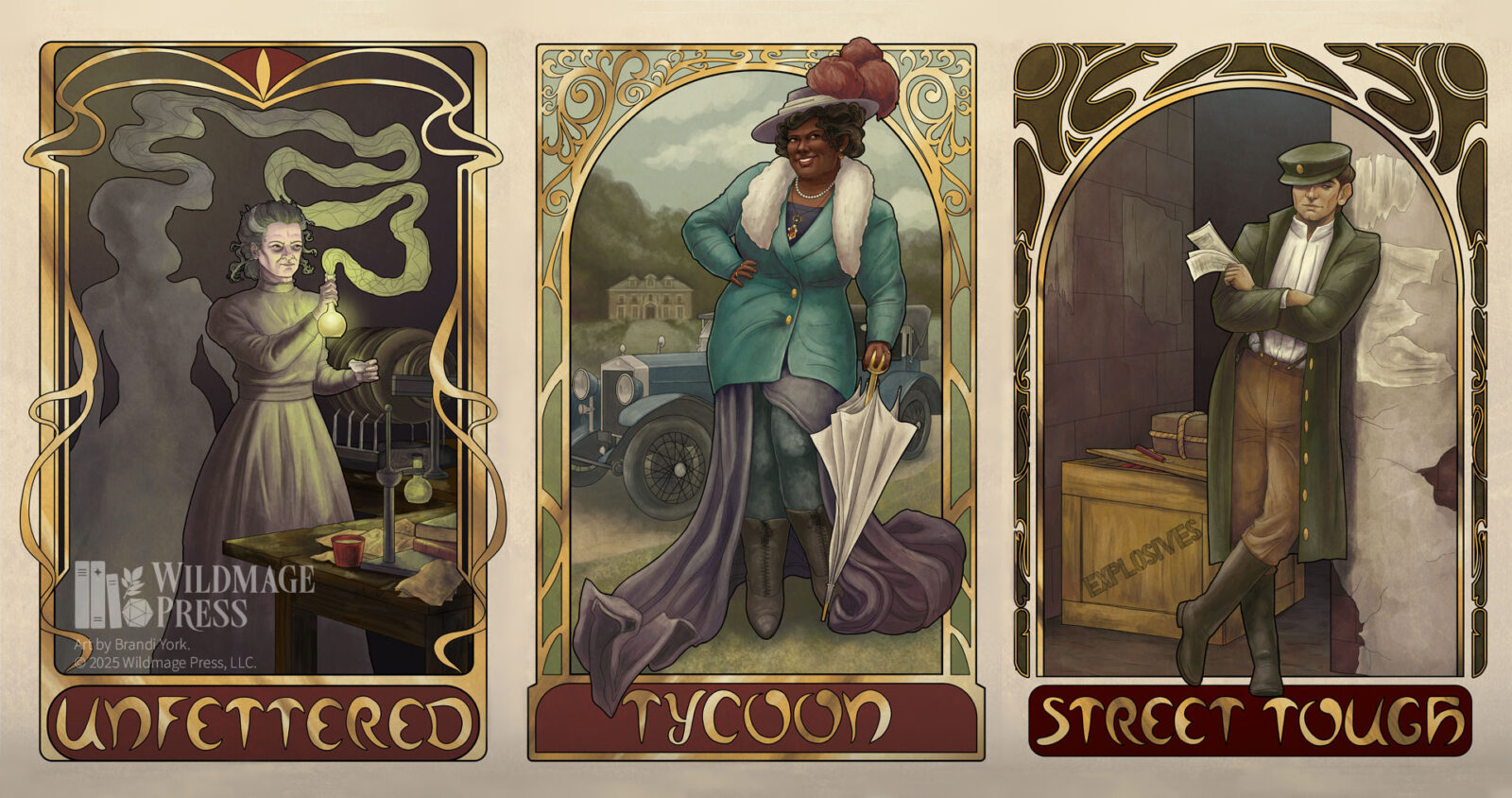
Candela Obscura encourages us to reconsider what we think we know—magickal phenomena as well as the human spirit hold endless surprises. In the newest issue of Horizons magazine from Wildmage Press, designer and Candela Obscura Core Rulebook contributor Carlos Cisco brings us three new specialties for investigators that challenge what we might think of as “protagonists” or “heroes.” The Tycoon (Face), Street Tough (Muscle), and Unfettered (Weird) turn oft-villainous archetypes into heroic—or antiheroic—members of Candela Obscura, and are instantly playable with interactive character sheets included in the magazine! You can buy the full issue here, or subscribe to the Wildmage Press Patreon here.
Today we’re thrilled to interview Carlos Cisco, designer of this exciting new content that uses the Darrington Press Community Gaming License, as well as Wildmage Press cofounder and Tal’Dorei Campaign Setting Reborn author Hannah Rose!
Carlos, what was your inspiration for designing these three unusual Candela Obscura specialties? Are you often intrigued by anti-heroes or unusual protagonists?
CARLOS: I didn’t set out to create villains turned heroes. It all grew out of the question I had that spawned the Tycoon. I kept going back to the bit of world building that Spenser and Rowan put in about how Candela Obscura doesn’t pay its agents. It’s not a job, it’s something you do because you believe in it. So how do you live? Do you have a day job? Are you really explaining to your boss, after calling in sick, that the reason you can’t work any more is that your arm has turned into brick because you punched a ghost?
I kept coming back to the idea of a wealthy benefactor: someone who probably saw too much (likely their own fault) and decided to help out in a very material way. A lot of the villains in the adventures in the core book are often business magnates who are taking things a bit too far, so once I had that locked in the other two fell into place. The Face was a natural fit for the Tycoon who was all about leveraging their wealth and privilege for influence and coercion.
For the Street Tough, I drew a lot from my time on the WGA strike lines, but also from the Dental Plan episode of the Simpsons. Mr. Burns sends hired goons (who announce themselves as such) to Homer’s house to bring him in and that still makes me cackle to this day. I wanted to build a support character that could hold their own in a street fight.
The Unfettered is an amalgam of Victor Frankenstein, Dr Jeckle/Mr. Hyde, Herbert West, with a dash of Nikola Tesla and Marie Curie. I think the professor and the doctor are fantastic (the doctor is my most played specialty) but I found that neither of them gave me reason to throw my head back and cackle while I threw a big switch. So that’s the fantasy the Unfettered gives you.
But in general I am attracted to and intrigued by dirt bags, ne’er-do wells, and your morally ambiguous protagonists. I think an interesting place to sit, for a character, is someone doing the right thing but for entirely the wrong reasons. Or reasons that are, relativistically, immoral. But I guess there’s a little shared thematic DNA here with the first ARCADIA article I did for MCDM which was three greed themed D&D 5e subclasses. Avarice is probably the sin I am most attracted to on a narrative level. It’s an incredible driving force, and immediately easy to understand on a gut level … even if you don’t agree morally with its outcomes.
Playing “villains” or anti-heroes can be a challenging prospect for some; how did you design these specialties to make them easy to pick up and play, even to a player new to Candela Obscura’s setting of the Fairelands?
CARLOS: I don’t think you are expressly locked into playing a villain or even an anti-hero. I just saw these archetypes in the adventures as human villains and minions that populated the streets, laboratories, and mansions of Newfaire. I wanted to play with the idea of these types also being attracted to the philosophical underpinnings of Candela’s organization, or perhaps they’ve been reformed after the events of an investigation. In terms of ease, one challenge I see with games that take place in a fairly contained and specific setting (Candela, Blades in the Dark, Spire) can be getting players to invest and buy into the world without having to do a lot of extra reading.
The questions I pose help you narrow down who you might be in the world, and what your connections to it are. That way if, for example, a player knows their family home is in the Silverslip, maybe they’ll be more inclined to read one page about that district as opposed to digging into the whole location section (which is what I do) and figuring it out for themselves. It’s all about reducing mental load to increase buy in.
HANNAH: The ability for folks to just “pick up and play” is really important to us, so I loved Carlos’s idea to include background questions—and I think the ones he came up with are extremely valuable and evocative. They aren’t generic prompts: they feel like I’m sitting down with Carlos, an expert in the system and setting, and discussing a bunch of cool ideas for my character and how they fit into the world and what their motivations and goals are. And I don’t think you have to be an antiheroic character at all—my first idea for a Tycoon character was a rebellious, bored young heiress to a steel magnate who’s sick of the gilded but empty lifestyle among the upper classes. More of a hero than an antihero, though her privilege would lead to some fun friction with the rest of the party.
Horizons magazine playtests its published material thoroughly—what was that process like, and what were some of the insights to come out of that process?
HANNAH: The general process goes something like: pitch, write, developmental edit, playtest, revise, playtest, revise, copyedit, layout, proofread. Plus the art happening in parallel. So we do two rounds of playtesting for everything we publish. For “Adversarial Archetypes,” we had a mix of testers who were very familiar with Candela Obscura and ones who were less experienced with Candela specifically but still knowledgeable about similar game systems. Honestly, I’ll brag a little on behalf of Carlos and say that he nailed the flavor and vibes for these archetypes from the very beginning—the testers told us that “the flavor of the abilities [was so clear that] players had character concepts within seconds and a sense of the Circle personality and dynamics within minutes” and “the newbies left wanting to play more Candela”!
One thing we emphasize with our testers is that their role is to state the issue (what was unclear, confusing, not fun) but not to “backseat design” by telling us what they think the mechanic should be instead. Sometimes players don’t like something purely because they were expecting something else, but that can be fixed by adjusting the presentation. For example, some testers felt that the “Make a Plan” Illumination Key didn’t fit the Street Tough—because the archetype is a hired goon, right?—so we fixed that by emphasizing up front that the Street Tough is savvy about organizational structures. And an ex–hired goon who’s now with Candela Obscura might have witnessed a lot of villainous plans being pulled off or thwarted in the past, giving them unique insights.

The Candela article has three brand-new illustrations of the specialties by Brandi York, and the cover art of this issue is by Kent Davis, an artist featured in Tal’Dorei Campaign Setting Reborn. What is the process of working with artists like for this article and Horizons in general?
HANNAH: First off, I should mention that Wildmage Press and Horizons exists in part because of the art for Tal’Dorei Reborn! My cofounder Clara Daly (@EldritchBlep) and I met when she did several illustrations for that book and the (very) short version is that we liked collaborating so much we ended up founding a company together!
We have an ever-growing list of artists we’d like to work with, and for each article we decide who we think is well-suited to the illustrations we want and reach out to them. For “Adversarial Archetypes,” we wanted to emulate the art nouveau–style cards that each specialty gets in the Candela Obscura Core Rulebook, without feeling like we needed to copy the style and presentation exactly. I immediately thought of Brandi York because of her tabletop and Critical Role art nouveau collections, and the fact that she’s familiar with Candela through being part of the Critter community was a bonus. From there, we gave her an art brief with suggestions for each character, the description of each archetype, and a bunch of references. Brandi even recorded some of the illustration process and Horizons subscribers will get a full behind-the-scenes post on the art!
Kent Davis has been on our shortlist for cover artists from the beginning, and one of our early concepts for a Horizons cover was a tropical shoreline with some kind of portal. Kent is a master of clouds and mountains, and when we contacted him, he told us that he’s wanted a commission for a tropical beach scene for so long it had become a running joke among his friends. So it was serendipity. Aside from all three of us (Kent, Clara, and me) agonizing over just the right arrangement of the palm trees in the foreground, the art direction process was mostly us gasping in amazement at Kent’s work.
Carlos, you’re also a writer in Beadle & Grimm’s new set of Candela Obscura assignments, Horrors of the Fairelands. What do you find compelling about the system or the setting?
CARLOS: I’ve been a horror kid since I was little, so the vibe is just right. I also love its flexibility as a system to tell mystery and investigation stories. You really only need to know what the hard turns and essential information points are, and if your players go way off track it’s pretty easy to find ways to put that information where it needs to end up. I did a lot of work on expanding what Rowan and Spenser originally had for the investigations in the core book, but Horrors of the Fairelands really let me breathe with a bigger word count and I got to build one hell of a boss encounter with some really fun mechanics. Very excited for people to play it.
What advice would you give to other designers about writing for Candela Obscura, the Illuminated Worlds System, or for publication in Horizons more broadly?
CARLOS: For Candela specifically it’s really about internalizing how mystery storytelling is done, and mastering the specific tone of horror you are going for. Watch and read mysteries. Consume horror, books especially. I love a good horror movie, but the horror of the unimaginable that can be conveyed in books is unparalleled. But in terms of concrete tips, start at the end. What is the answer to the question, and work your way backwards with the clue trail. In terms of writing for Horizons, or for similar publications, I think it’s about three things.
- Building and maintaining professional relationships, which is only something you can do A) with time and B) by putting yourself out there whether it’s going to cons or finding collaborators on social media. Networking in person flipped my career on its head, and it didn’t really take off till I started doing that.
- Having good samples ready. And not just one. Probably three. But don’t give them three unless they ask.
- Leveraging your personal experience, either as a way to show you’ve already been professionally vetted, or to demonstrate that you have a unique angle or point of entry to your work.
HANNAH: There are four main things we look for when considering designers (and no, we don’t have an open call for pitches at this time).
- Overall writing skills: clear, coherent, grammatically correct prose in the context of TTRPG writing.
- Originality and mechanical design skills: a demonstrated ability to create things that feel unique and exciting while also smoothly fitting in with the existing material for a system.
- Dedication to quality and attention to detail: a high level of polish in a designer’s published work tells me that they care about the quality of the final product and that they have some sense of the difference between a beginner’s rough draft and an expert’s final draft, even if they aren’t an expert yet.
- Professionalism and values: don’t be a jerk, don’t trash other creators on social media.
The best designers are open to collaboration, feedback, and growth.
Hannah, what can folks look forward to next for Horizons?
HANNAH: We have so much cool stuff in store! Horizons 3 will have new locations, storylines, magic items, stat blocks, and a Warlock subclass—plus “Deathmatch Atlantis,” a brand-new island for Evil Hat Productions’ Deathmatch Island game. Publishing for multiple systems (and their various licenses) is a big administrative challenge, but in my years of freelancing I’ve loved getting to collaborate with so many of the best creators—Critical Role and Darrington Press very much included—and I wasn’t ready to give that up just because I have my own company now. And to preempt a likely question: yes, we do plan on publishing content for Daggerheart!
Where can people find you and your other projects?
CARLOS: You can find me on Bluesky. In terms of other projects, I have quite a few words appearing in an upcoming project of yours I’m hoping people will check out (it’s Daggerheart). Otherwise I have writing and design work most recently in Haunted Table’s Triangle Agency, MCDM’s upcoming Draw Steel, both definitely worth people’s attention. My work on Star Trek: Discovery can be found on Paramount Plus and a giant shark movie, The Black Demon, that I have a “Story By” credit on is available on Amazon Prime.
HANNAH: The Wildmage Press website has all the deets—you can subscribe to Horizons there and on Patreon, and buy individual issues of Horizons in our shop. We also have Bluesky, Instagram, and a cozy Discord server!
Thank you so much to our fantastic interviewees! Read their bios below for more about both Carlos and Hannah, and let us know what you think of the new specialties on socials and on the Darrington Press Discord!
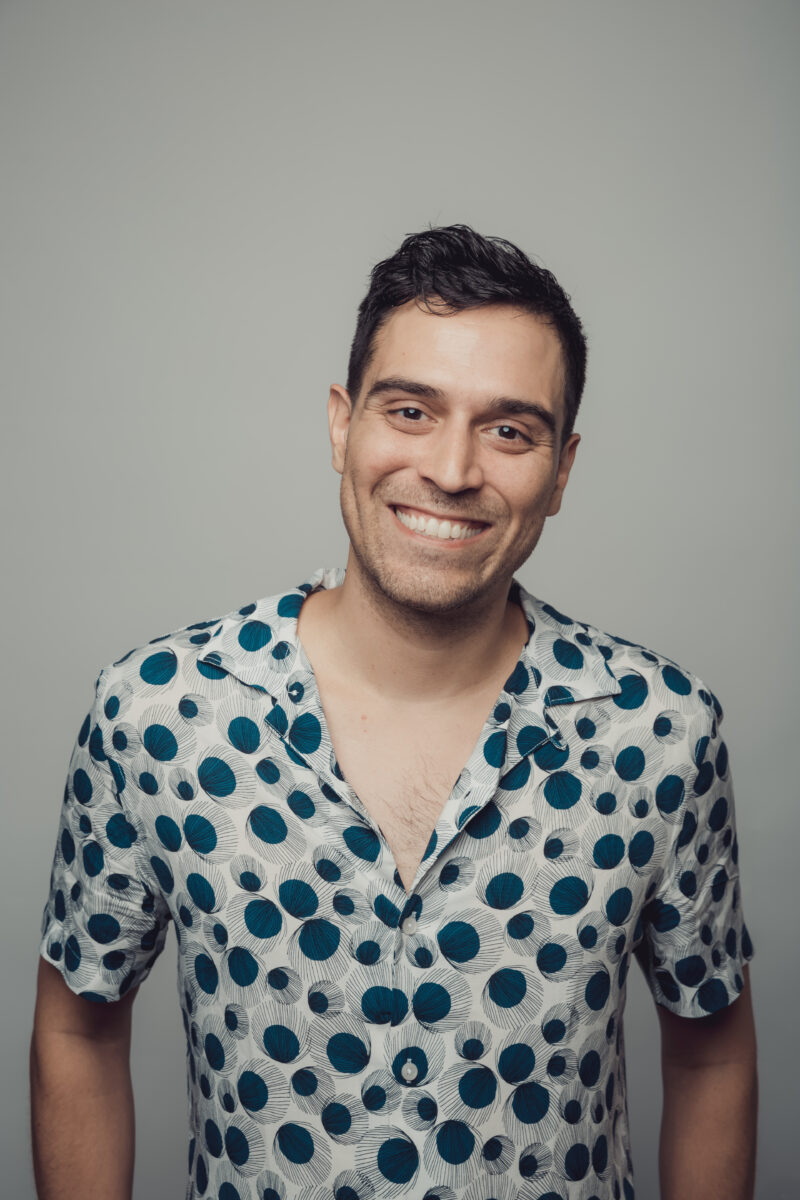
Carlos Cisco: Carlos Cisco is a film and television writer, TTRPG designer, and proud union member. He has a deep love for horror, science fiction, fantasy, and an increasingly weary loathing for late stage capitalism. Most recently he’s written for Star Trek: Discovery season 5 and has tabletop work that appears in Haunted Table’s Triangle Agency, MCDM’s ARCADIA, Flee, Mortals!, and Draw Steel, as well as Darrington Press’s Candela Obscura and Daggerheart. He can be found on Bluesky at @carloscisco.
Hannah Rose is a game designer, editor, and all-around nerd. She’s the co-founder of Wildmage Press and the co–lead designer of Tal’Dorei Campaign Setting Reborn. Hannah has also worked on Explorer’s Guide to Wildemount, Call of the Netherdeep (Critical Role/Darrington Press); ARCADIA and Flee, Mortals! (MCDM Productions); The Wild Beyond the Witchlight, Journeys Through the Radiant Citadel, and other official D&D titles with Wizards of the Coast. She is helped—or hindered, depending on the day—by two feline familiars. You can find her on Bluesky and Instagram.
